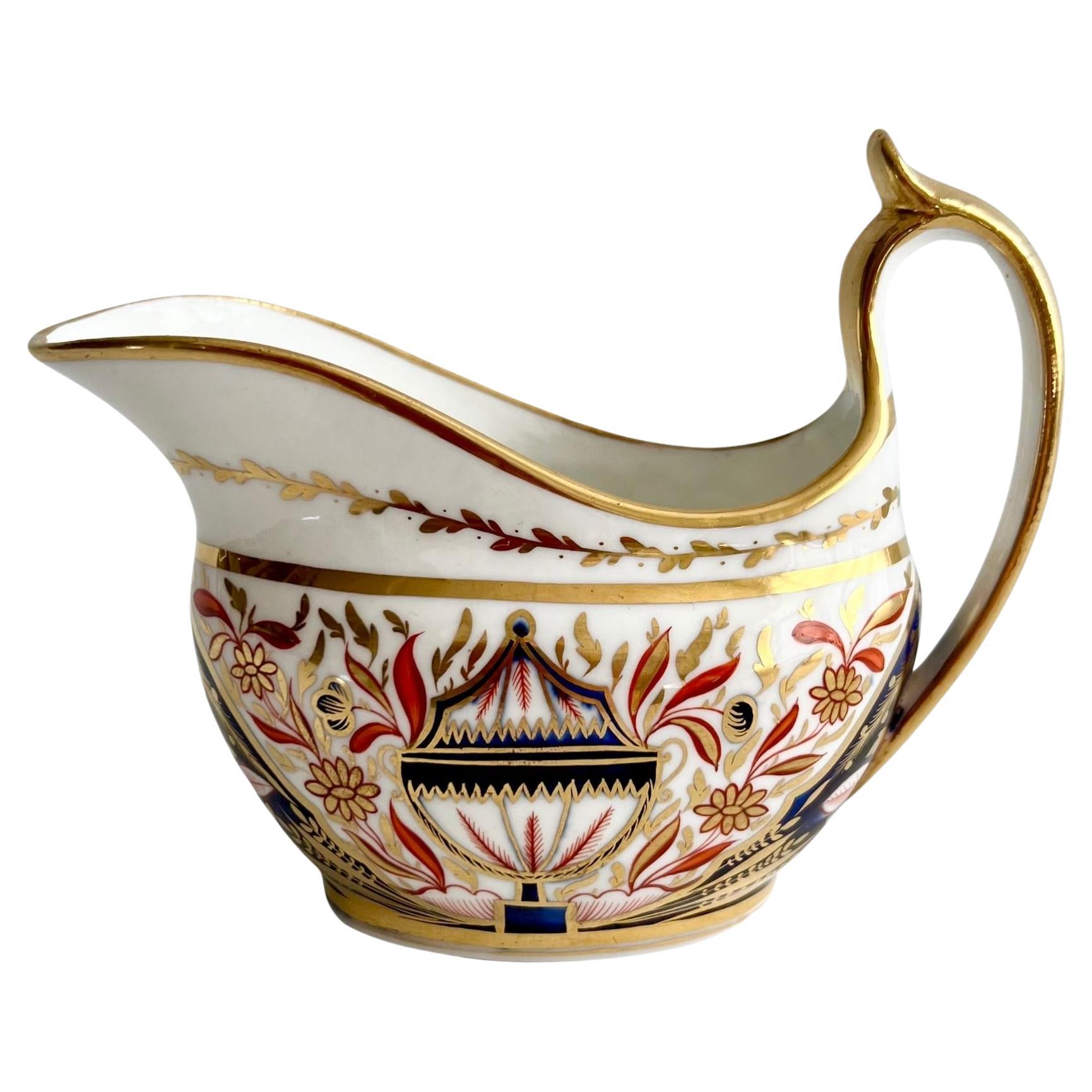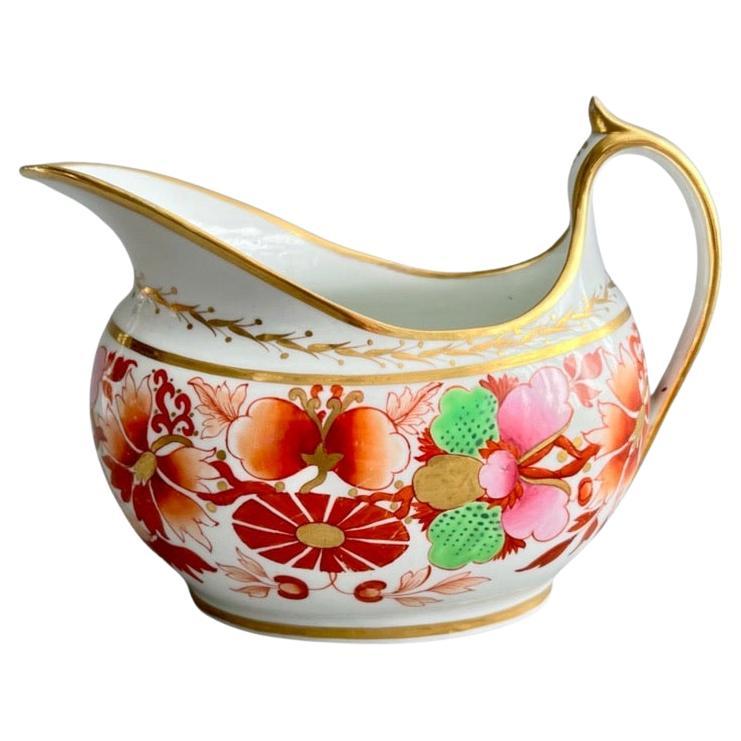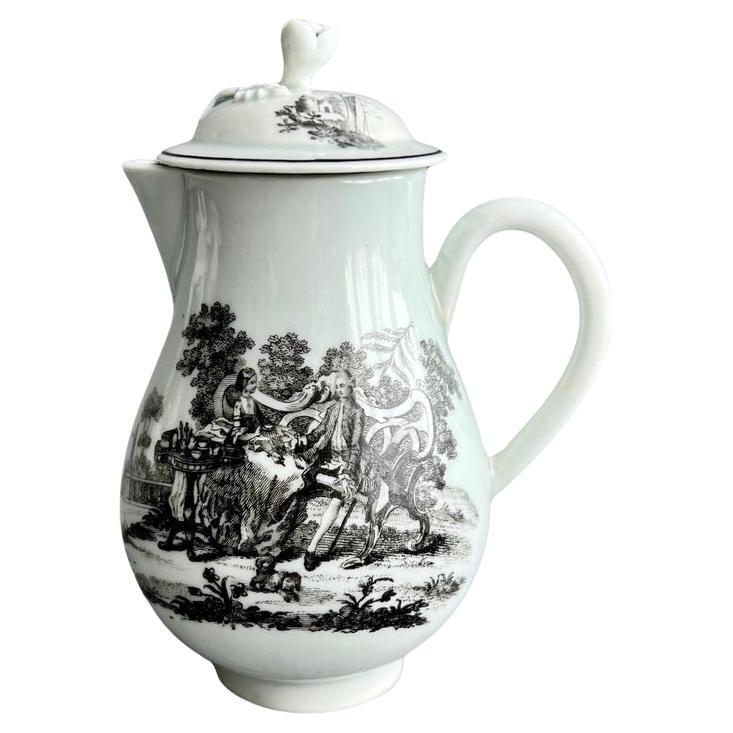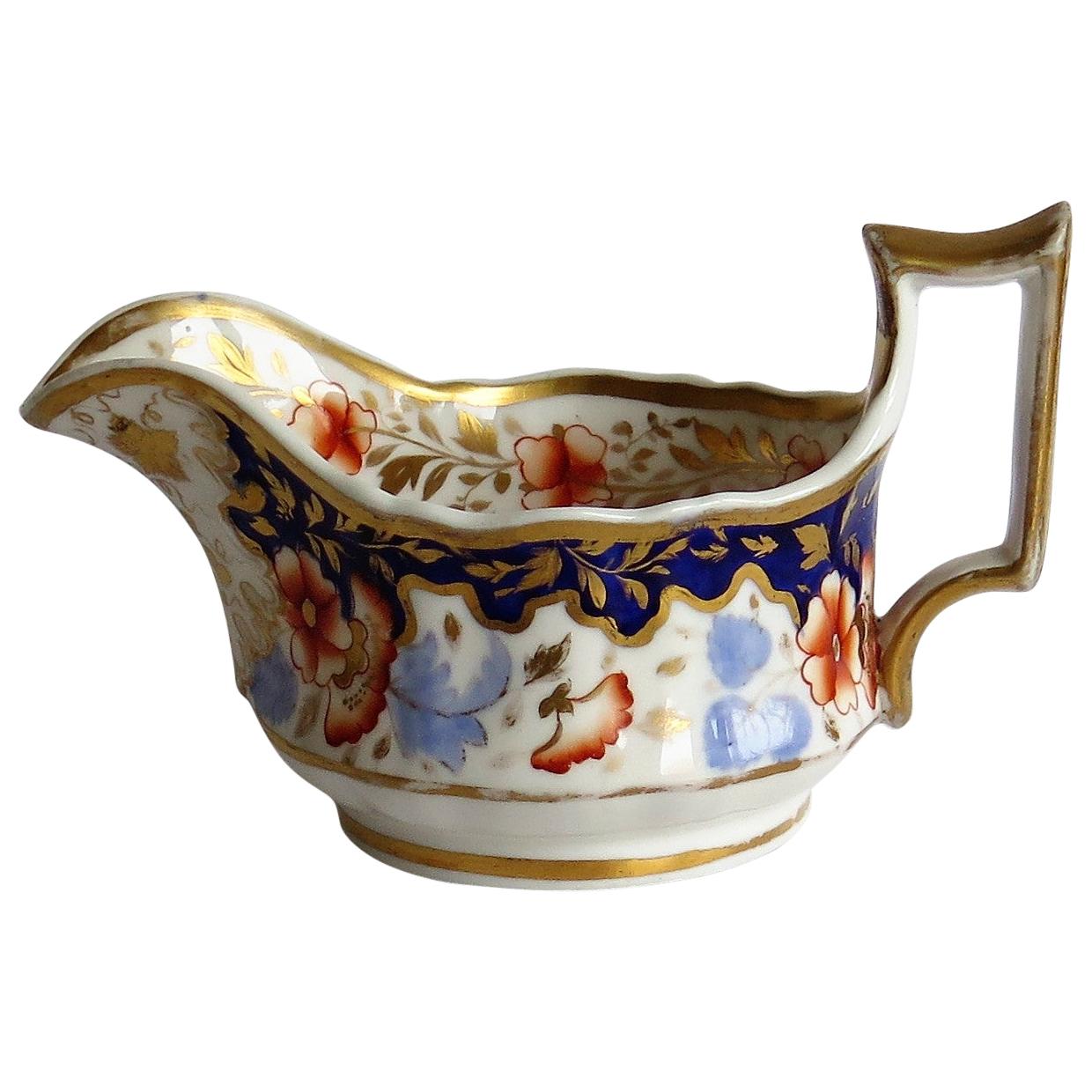Spode Milk Jug Creamer, Cobalt Blue Neoclassical Pattern Imari, Regency Ca 1825
About the Item
- Creator:Spode (Maker)
- Dimensions:Height: 3.5 in (8.89 cm)Width: 3 in (7.62 cm)Depth: 5.5 in (13.97 cm)
- Style:Regency (Of the Period)
- Materials and Techniques:
- Place of Origin:
- Period:
- Date of Manufacture:circa 1825
- Condition:Wear consistent with age and use. In perfect antique condition without any damage, crazing or repairs and hardly any wear.
- Seller Location:London, GB
- Reference Number:
Spode
Spode is one of the oldest and most distinguished of the great pottery companies of Staffordshire, the time-honored home of English ceramics. The firm’s blue and white bone china transferware is a timeless classic. Spode dishes compose the sort of elegant dinner service that most of us envision on a traditional holiday table.
The company was established in 1770 in Stoke-on-Trent by Josiah Spode, a friend and neighbor of another estimable English ceramist, Josiah Wedgwood. Spode was particularly known for two technical achievements in the firm’s early decades. The first was to develop a standard formula for the making of bone china — a type of porcelain (made with a mixture of bone ash, minerals and clay) that is dazzlingly white and so strong it can be used to create very thin translucent plates and vessels. The other was to perfect the making of transferware. That process involves the transfer of pictorial images inked on tissue paper — such as the garden scenery in the famous Willow dish patterns — onto ceramics that are then sealed with a glaze. In 1833, following the sudden death of Josiah Spode III, business partner W.T. Copeland took over the company and changed its name. Collectors regard Copeland-marked pieces as Spode china. The Spode brand was revived in 1970.
From the 1820s onward, Spode enjoyed tremendous success both in Britain and elsewhere owing to the beauty and vitality of its decorative imagery. By some counts, Spode created more than 40,000 patterns in the 19th century. Many favorite Spode patterns — among them Blue Italian, India Tree, Greek and Woodland — date to the company’s early years. Spode’s most popular pattern, Christmas Tree, was introduced in 1938. Prices for Spode china vary widely, based on the size of the service, its condition and the pattern. An antique dinner service for 12 people or more, in good repair and complete with cups and serving dishes, will generally cost between $10,000 and $20,000. Such Spode services become heirlooms — a proud and timeless addition to a family’s table. And as you will see on these pages, Spode’s rich and varied wares offer a visual feast in and of themselves.
- ShippingRetrieving quote...Ships From: London, United Kingdom
- Return PolicyA return for this item may be initiated within 14 days of delivery.
- Minton Porcelain Creamer Milk Jug, Neoclassical Imari, Regency, ca 1810By MintonLocated in London, GBThis is a beautiful and rare milk jug or creamer made by Minton in about 1810. The jug has a very beautiful neoclassical Imari pattern with the number 202. Minton was one of the p...Category
Antique 1810s English Regency Porcelain
MaterialsPorcelain
- Barr Flight & Barr Milk Jug / Creamer, Regency Imari Pattern, ca 1810By Barr, Flight & Barr WorcesterLocated in London, GBThis is a colourful milk jug or creamer made by Barr Flight & Barr around the year 1810. It is decorated with a bright Imari design in the Regency taste. This milk jug would have be...Category
Antique 1810s English Regency Porcelain
MaterialsPorcelain
- Ridgway Porcelain Milk Jug, White with Purple Flowers, Regency, circa 1825By Ridgway PorcelainLocated in London, GBThis is a charming milk jug or creamer made circa 1825 by Ridgway. The jug is decorated with simple monochrome puce / purple flowers on a white ground. The shape is typical for its t...Category
Antique 1820s English Regency Pitchers
MaterialsPorcelain
- Worcester Milk Jug and Cover, Creamer, Monochrome Print Tea Party no.2, ca 1760By 1st Period Worcester Dr. WallLocated in London, GBThis is a very charming milk jug with cover made by Worcester in their First Period (sometimes called the Dr Wall Period) in about 1760. The items are decorated in a black overglaze ...Category
Antique 1760s English George III Porcelain
MaterialsPorcelain
- Spode Porcelain Teacup, Imari Tobacco Leaf Pattern 967, Regency ca 1810By SpodeLocated in London, GBThis is a beautiful teacup and saucer made by Spode in about 1810. The set is decorated with the famous Imari Tobacco Leaf pattern 967, which was first introduced by Spode in 1806. ...Category
Antique 1810s English Regency Porcelain
MaterialsPorcelain
- Spode Porcelain Teacup Trio, Red Imari Dollar Pattern, Regency, ca 1810By SpodeLocated in London, GBThis is a beautiful orphaned teacup made by Spode in about 1810. It bears a beautiful Japanese-inspired Imari pattern. Spode was the great pioneer among the Georgian potters in England. Around the year 1800 he perfected the bone china recipe that has been used by British potters ever since, and he was also the leading potter behind the technique of transferware, making it possible for English potters to replace the Chinese export china, which had come to an end around that time, with their own designs. This was fundamental to a thriving industry that would last for about 150 years and provide half the world with their tableware. Spode porcelain is regarded as one of the highest quality porcelains around; for a soft-paste porcelain it is surprisingly hard and fine, and has a wonderful bright white colour. The pattern on this can is called "Dollar" pattern, a very famous pattern that was used by English potters in the 18th and early 19th Century. It is obvious why it is called “dollar” - but its origin is less obvious! It is thought that this pattern was derived from a very old Chinese pattern depicting a tree with elaborate foliage that hides a Chinese character representing longevity or happiness. Traditionally, this went with a an image called “Taotie”, which was used on very ancient bronze vases...Category
Antique Early 1800s English Regency Porcelain
MaterialsPorcelain
- Ridgway Porcelain Milk Jug or Creamer Pattern 2/1005, Regency Period, circa 1825By J & W RidgwayLocated in Lincoln, LincolnshireThis is a very decorative, porcelain milk jug or creamer in the early Grecian shape, made by John and William Ridgway, of Shelton, Hanley, Staffordshire Potteries, England, dating to...Category
Antique Early 19th Century English Regency Ceramics
MaterialsPorcelain
- Spode "King's Pattern" Black Chintz Pitcher and BowlBy SpodeLocated in Great Barrington, MAThis is a rare set of matching water large water pitcher and bowl with all-over black chintz decoration with polychrome decoration. The dramatic co...Category
Early 20th Century English Porcelain
MaterialsPorcelain
- Antique English Staffordshire Transferware Serving Creamer Jug PitcherLocated in Dayton, OH"Antique 20th century Staffordshire transferware porcelain jug or pitcher featuring an English landscape in black, originally designed by James Cutts for W. Adams & Sons, and a yellow border around the upper edge. “James Cutts was born in 1808 in Pinxton, Derbyshire, he was the 9th of 10 children and the youngest of five boys. His father, John Cutts, was a moderately gifted china painter, trained at the Derby porcelain works, who moved to become manager of the Pinxton porcelain...Category
Early 20th Century Late Victorian Porcelain
MaterialsPorcelain
- English Porcelain London Shape Imari Painted JugBy Coalport PorcelainLocated in Bishop's Stortford, HertfordshireA fine quality antique English porcelain, possibly Coalport, London shape sauce jug decorated in an Imari pattern and dating from around 1810. The sauce jug is lightly potted and is ...Category
Antique Early 19th Century English George III Pitchers
MaterialsPorcelain
- Antique English Caughley Porcelain Milk Pitcher or JugBy Caughley PorcelainLocated in Philadelphia, PAA fine antique English porcelain milk pitcher or jug. Comprising the pot, a conforming lid, and a later associated chain connecting the two. With blue underglaze decoration of...Category
Early 20th Century English Georgian Pitchers
MaterialsPorcelain
- George Jones Blossom Milk Jug CreamerBy George JonesLocated in Chelmsford, EssexGeorge Jones Majolica jug/creamer which features a branch handle, with blossom branching off on either side and a basket weave border to bottom. Colouration: turquoise, brown, green,...Category
Antique 1870s Pitchers
MaterialsMajolica






